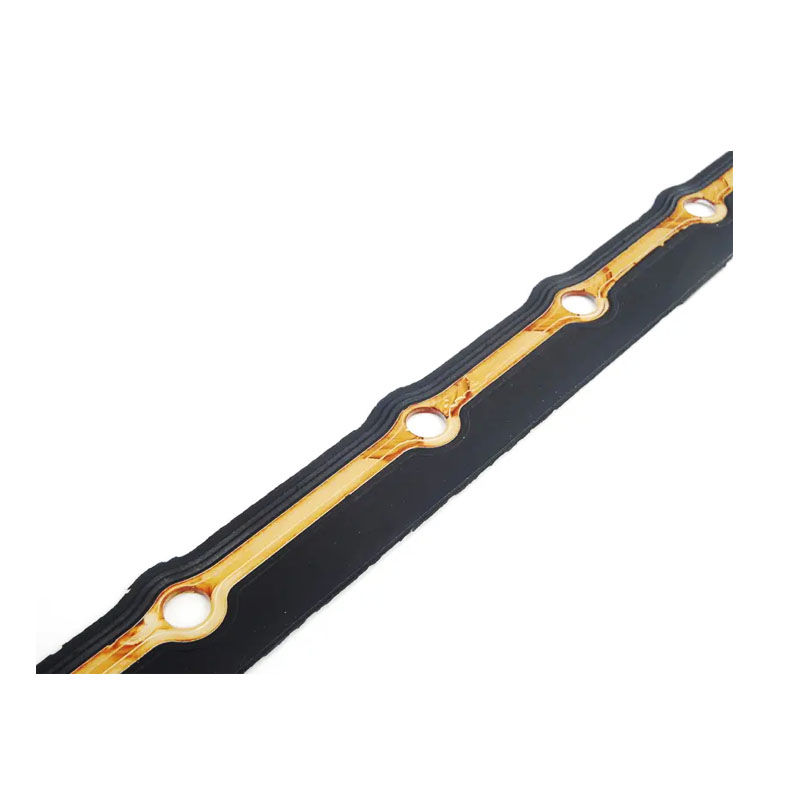Understanding the Importance of Crankshaft Seal in Engine Performance and Durability
Understanding Crankshaft Seals Importance, Types, and Maintenance
The crankshaft is one of the most critical components of an internal combustion engine, converting the linear motion of the pistons into rotational motion to drive the vehicle. However, like any mechanical part, it is subject to wear and tear, which can lead to various issues, including oil leaks. This is where the crankshaft seal comes into play.
What is a Crankshaft Seal?
A crankshaft seal, also known as a rear main seal, is designed to prevent engine oil from leaking out of the engine at the junction of the crankshaft and the engine block. Positioned at both the front and rear of the crankshaft, these seals are typically made of durable materials such as rubber, silicone, or polymer compounds that can withstand the high temperatures and pressures found inside an engine.
Importance of Crankshaft Seals
The primary function of the crankshaft seal is to maintain the integrity of the engine oil system. Oil lubricates the moving parts of the engine, reducing friction and preventing overheating. If a crankshaft seal fails and oil begins to leak, it can lead to a host of problems
1. Loss of Oil Pressure Insufficient oil can result in a drop in oil pressure, leading to inadequate lubrication of engine components. 2. Engine Overheating With reduced oil levels, friction between moving parts can increase significantly, resulting in overheating and potential engine damage.
3. Environmental Concerns Oil leaks can contribute to environmental pollution, harming wildlife and ecosystems.
Types of Crankshaft Seals
There are several types of crankshaft seals, and their design may vary depending on the engine and manufacturer. The most common types include
crankshaft seal

1. Lip Seals These seals feature a flexible lip that conforms to the crankshaft, providing a tight seal and preventing oil leakage. 2. V-Rings These seals are more flexible and can accommodate slight misalignments of the crankshaft, making them suitable for various applications.
3. Soket Seals Used primarily in high-performance engines, these seals utilize advanced materials for higher durability and performance.
4. Double Lip Seals Providing an extra layer of protection, these seals have two sealing lips to minimize the risk of oil leaks.
Maintenance and Replacement
To ensure the longevity of your crankshaft seals, regular maintenance of your vehicle's engine is essential. Here are some tips
1. Routine Inspections During regular service intervals, mechanics should inspect for any signs of oil leakage around the crankshaft area.
2. Engine Oil Quality Using quality engine oil with the appropriate viscosity can help reduce wear on seals and other engine components.
3. Replacement If you observe oil pooling under your vehicle or notice a drop in oil pressure, it may be time to replace the crankshaft seals. Replacement typically involves draining the engine oil, removing the crankshaft, and replacing the seals before reassembly.
4. Professional Assistance Given the complexity of the task, it’s advisable to consult a professional mechanic for crankshaft seal replacement to ensure it’s done correctly without causing further damage to other components.
Conclusion
In summary, the crankshaft seal is a small yet vital component of your vehicle's engine, preventing oil leaks and ensuring optimal performance. Understanding its function and keeping an eye on its condition can save you from costly repairs and maintain the efficiency of your engine. Regular maintenance and timely replacement are crucial for keeping your vehicle running smoothly, so make crankshaft seals a part of your vehicle care routine.
-
Understanding the Front Main Engine Seal: Purpose, Maintenance, and Installation
News Jul.29,2025
-
Understanding O-Rings and Seal Rings: Types, Applications, and Custom Solutions
News Jul.29,2025
-
Understanding Crankshaft Oil Seals: Rear Seals, Pulley Seals, and Their Role in Engine Integrity
News Jul.29,2025
-
The Importance of Front and Rear Crankshaft Seals in Engine Performance and Oil Management
News Jul.29,2025
-
Crank Oil Seals: Functions, Types, and Cost Considerations in Engine Maintenance
News Jul.29,2025
-
A Comprehensive Guide to O-Rings and Seals: Types, Materials, and Global Applications
News Jul.29,2025
-
Mastering Diesel and Performance Engine Maintenance: A Guide to Critical Oil Gaskets
News Jul.28,2025
Products categories















